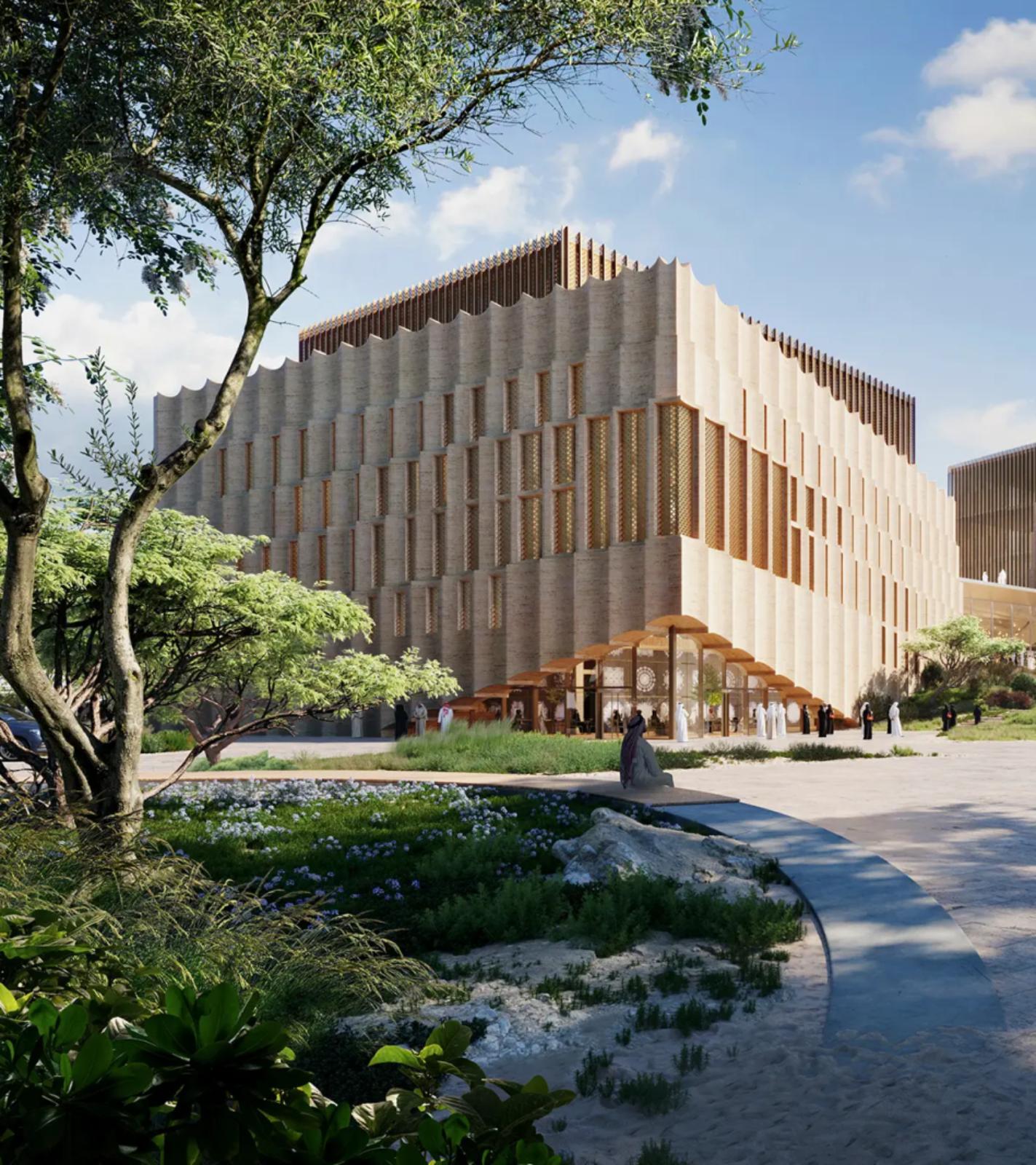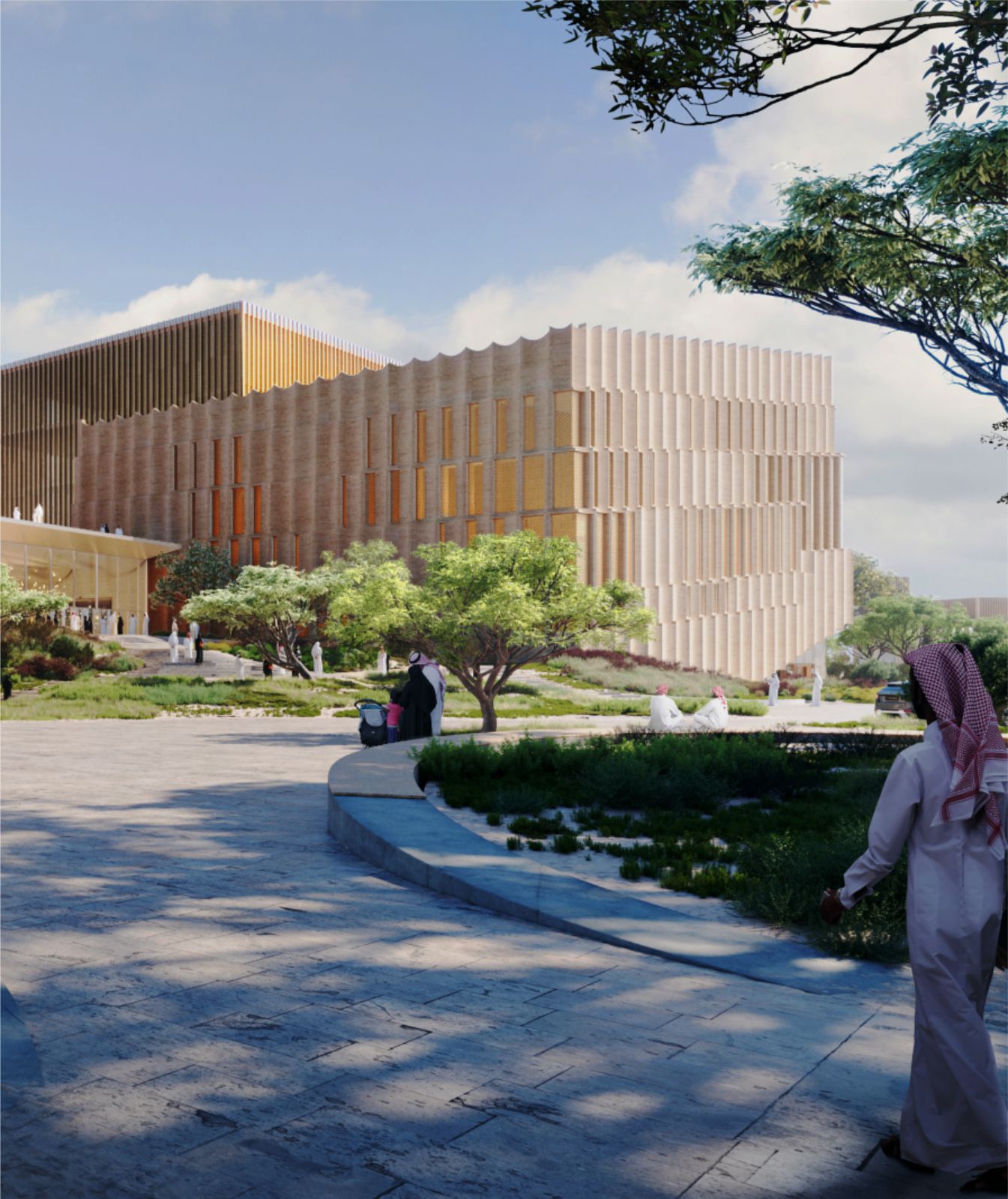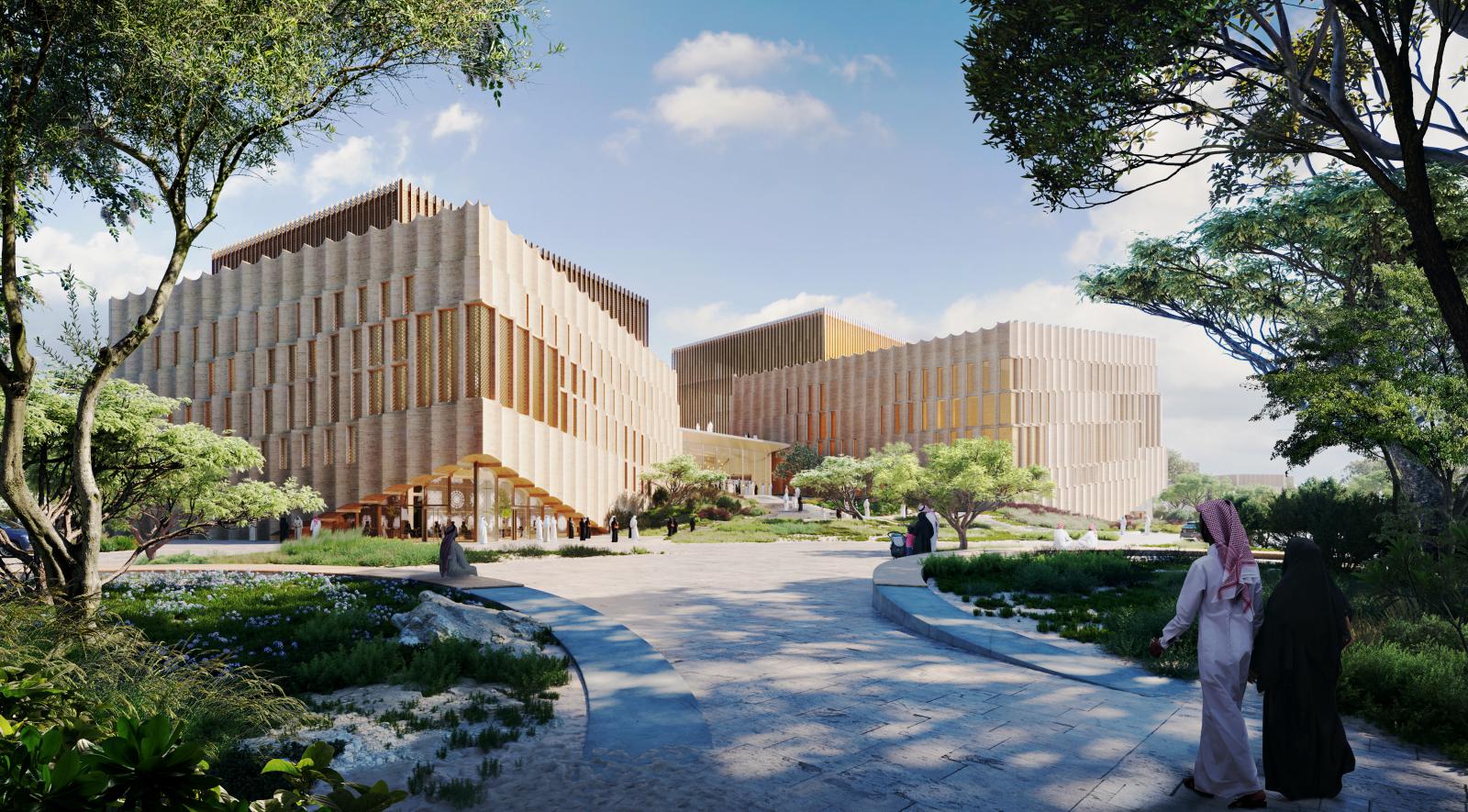Located on the Red Sea waterfront, the opera will connect residents and visitors to the sea by a cultural spine, with a natural canopy, running from the city, through the opera house, to the water. The identity of the new Opera Quarter, part of the Jeddah Central masterplan, is driven by the opera house and its relationship with the landscape; creating a social space that promotes cultural encounters, houses events, and becomes a destination for future generations.
Preserving Al-Balad
Inspired by the dense character of historic Al-Balad with its complex web of lanes, souqs, and Barahaats, the opera is nestled within its urban fabric. The urban form of the neighborhood is shaped over time, buildings are stitched together like an urban archipelago – the Jeddah Opera House a natural extension of this unique additive character. With geometric volumes inspired by Al-Balad, the opera will have a distinct appearance from different perspectives in the area.

From Eve´s Plaza, the massing is a dynamic composition of volumes and from the waterfront promenade, it appears as a twin-volume structure, a beacon on the Red Sea coastline. Designed for inclusive programming, the 150-seat Rehearsal Hall, the mid-scale 750-seat Playhouse theatre, and the 1500-seat opera Red Sea Theatre, are flexible performance spaces which will host world class touring theatres and orchestras, as well other commercial events and community education and outreach.
Cultural canopy
The cultural spine creates a sense of discovery for the visitor on the approach to the opera, weaving from the city to the Red Sea with buildings clustered along the central path. Carefully selected local vegetation types have been integrated into the plan to enhance the microclimate and improve biodiversity, water management, and air purification. Walking routes are shaded to mitigate the heat stress and buildings are positioned to direct the wind flow, encouraging natural urban ventilation. The inclusion of light-weight textile shading creates more shade when needed, extending the comfortable microclimate.

Moving closer to the beachfront and park areas, the landscape encourages social interaction through sensorial experiences, creating inviting spaces for gatherings. Within the smaller alleys nestled deep within the urban plan, Wadi vegetation provides a cooling presence with its dense foliage, improving the feeling of discovery. The North entrance to the opera is a continuation of the urban fabric, creating an urban Barahat which reflects the inner foyer of the building, offering both an outdoor and indoor living room for the city.
The alley on the West side will connect this Barahat with the Opera Park via a universally accessible ramp complete with planters. The materials used throughout the public realm echo the area’s diverse geology, a variety of stones from the main plaza to the beach offer visitors a journey through the country’s rich natural formations. These diverse natural elements converge around the Opera house, imparting character to its facades and distinguishing its entrances, where visitors can celebrate both the country’s rich culture and natural diversity.

- Location: Jeddah, Saudi Arabia
- Architect: Henning Larsen
- Engineers: Buro Happold
- Acoustics: Nagata
- Stage technique: dUCKS Sceno
- Client: Jeddah Central Development Co.
- Size: 32,000 sqm
- Expected completion date: September 2027
- Images: Vivid-Vision, Courtesy of Henning Larsen

